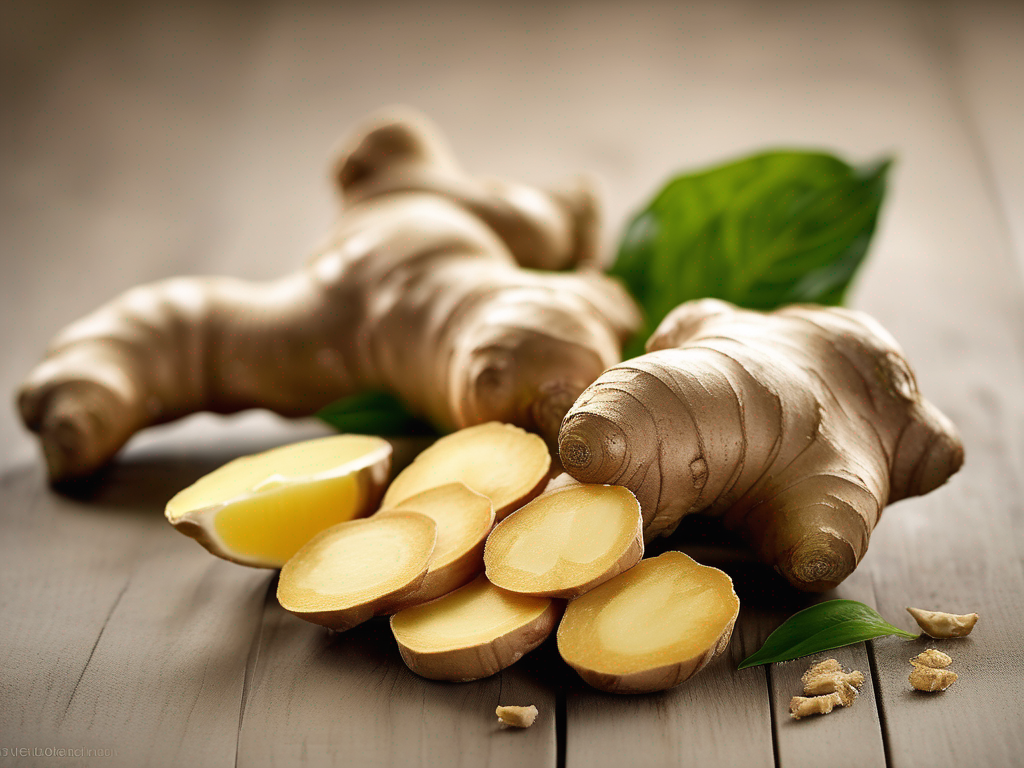
Signs that Ginger Root has Gone Bad and Should be Thrown Out
Get Your Free Food Safety Cheat Sheet
30 most common foods with instant answers. Print it and stick it on your fridge—completely free!
Signs that Ginger Root has Gone Bad and Should be Thrown Out
Ginger root is a versatile and flavorful ingredient commonly used in cooking, baking, and natural remedies. Despite its many benefits, like any food, ginger root can go bad if not stored properly. In this blog post, we will discuss the signs that indicate ginger root has spoiled and should be discarded. (Ginger root)
Understanding the Shelf Life of Ginger Root
Ginger root, when stored correctly, can last for a significant amount of time. However, it is essential to understand its shelf life to ensure you are using fresh and safe ginger in your recipes. Here are some general guidelines for the shelf life of ginger root:
- Fresh Ginger Root: Fresh ginger root can last for about 3 weeks when stored in the refrigerator.
- Peeled or Chopped Ginger: If peeled or chopped, ginger root will last for about 1 week in the refrigerator.
- Freezing Ginger: You can also freeze ginger root for up to 6 months for longer-term storage.
Proper storage is key to maintaining the freshness and quality of ginger root. To learn more about storing ginger root correctly, check out our [guide to storing ginger root](/food/ginger root).
Signs that Ginger Root has Gone Bad
When ginger root starts to spoil, there are several noticeable signs that indicate it is no longer safe to consume. It is crucial to be able to identify these signs to prevent foodborne illness and ensure the quality of your dishes. Here are the key indicators that ginger root has gone bad:
1. Mold or Discoloration
- Mold growth on the surface of ginger root is a clear indication that it has spoiled.
- Discoloration, dark spots, or slimy texture on the skin of the ginger root are signs of decay.
2. Unpleasant Odor
- Rotten ginger root will emit a foul or musty smell.
- Fresh ginger root has a strong, spicy aroma, so any off-putting odors indicate spoilage.
3. Softness or Wrinkling
- Healthy ginger root should feel firm and have smooth, taut skin.
- If the ginger root feels soft or has started to wrinkle, it is past its prime and should be discarded.
4. Taste Test
- If you notice any of the above signs but are unsure, you can perform a taste test.
- Spoiled ginger root will have a bitter or off taste, unlike the fresh, zesty flavor of good ginger.
Safety Tips for Handling and Storing Ginger Root
To ensure the longevity and quality of your ginger root, follow these safety tips for handling and storing:
- Choose Quality Ginger Root: Select fresh, firm ginger root with smooth skin and no visible signs of mold or damage.
- Proper Storage: Store ginger root in a cool, dry place or in the refrigerator. Avoid exposing it to moisture or direct sunlight.
- Avoid Peeling in Advance: To extend the shelf life, only peel or chop ginger root when you are ready to use it.
- Freezing Ginger: If you have excess ginger root, consider freezing it for future use. Peel and grate the ginger before freezing for convenience.
- Inspect Regularly: Check your ginger root regularly for any signs of spoilage. Remove any affected areas immediately to prevent the spread of mold.
Conclusion
In conclusion, ginger root is a valuable ingredient with many culinary and health benefits. By understanding the signs of spoilage and following proper storage practices, you can ensure that your ginger root remains fresh and safe for consumption. Remember to inspect your ginger root regularly, trust your senses, and never hesitate to discard any ginger root that shows signs of spoilage. Stay informed, stay safe, and enjoy the flavorful goodness of fresh ginger in your recipes! (Ginger root)
Authoritative Food Safety References
These agencies and university labs inform every tip and health precaution we publish.
USDA FoodKeeper – Cold Storage Guidelines
Official refrigerator, freezer, and pantry timelines maintained by the U.S. Department of Agriculture.
Visit USDA FoodKeeperFDA Produce Safety Rule & Grower Guidance
Field-to-fridge handling practices that prevent contamination of fruits, vegetables, and leafy greens.
Visit FDA Produce SafetyCDC Foodborne Illness Prevention Hub
Surveillance-backed guidance on pathogens, symptoms, and steps to reduce foodborne illness risk.
Visit CDC Food SafetyUC Davis Postharvest Technology Center
University research detailing optimal storage atmospheres for produce after harvest.
Visit UC Davis PostharvestPenn State Extension – Home Food Preservation & Safety
Peer-reviewed extension bulletins on safe canning, chilling, and reheating practices.
Visit Penn State ExtensionGet Your Free Food Safety Cheat Sheet
30 most common foods with instant answers. Print it and stick it on your fridge—completely free! Want more? Upgrade to the complete guide with 70+ foods.
Scan your food directly and get instant safety info using our AI-powered camera feature.